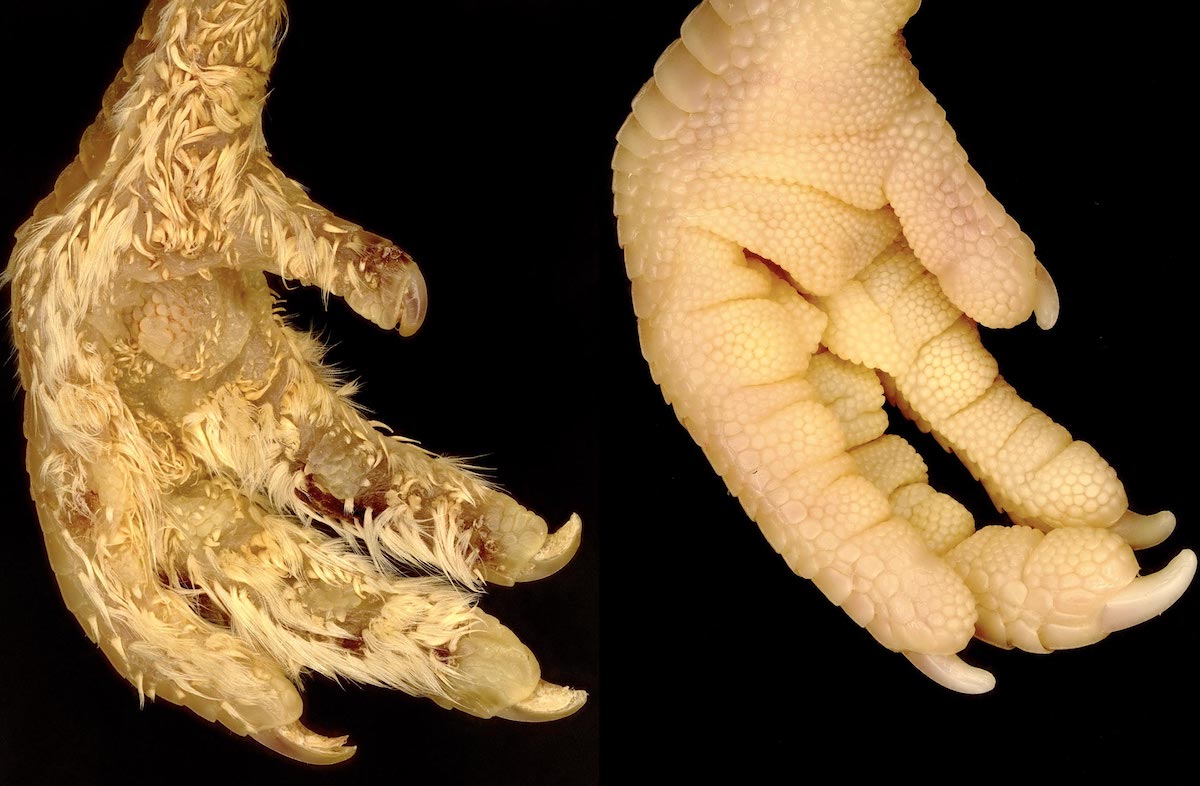
Single Gene Pathway Alteration Turns Chicken Scales into Feathers
May 24, 2023| |
Scientists from the University of Geneva found evidence that some evolutionary gaps do not require large changes in genome composition or expression. Rather, it only takes a transient expression in one gene to produce a cascade of development events such as permanently turning scales in chicken feet to feathers.
Existing literature states that embryonic development of skin appendages of different species begins in a similar way – cells express particular genes to develop structures and produce a localized thickening on the skin surface. The physical and biological processes that generate skin appendages including hairs, feathers, and scales in vertebrates are inherited from a common ancestor. Sonic hedgehog (Shh) is one of these genes. It controls a signaling pathway that is involved in the development of different body structures like the neural tube, limb buds, and skin appendages.
To thoroughly understand the role of Shh pathway, the scientists treated chicken embryos with a molecule to activate it. They injected the molecule directly into an egg's blood stream with the aid of a method called egg candling, in which a light source illuminates a fertilized egg to show the blood vessels inside it without breaking the egg. The chicks that hatched from the treated eggs were examined, and the scientists observed that their treatment triggered the formation of juvenile down-type feathers, which were comparable to the feathers that covered the rest of their body. In time, these feathers were replaced by adult feathers.
The findings support that the activation of the Shh pathway is vital to the conversion of scales into feathers, and that it is both immediately and persistently activated following the injection of the treatment. The data will allow future studies to further investigate the evolutionary mechanisms responsible for radical evolutionary transitions of different animal species.
Learn more from Science Advances and SciTech Daily.
| |
You might also like:
- GM Chickens Developed to Lay Anti-cancer Eggs
- Genome-Edited Chickens and Ducks Produced Using Non-PGC Method
- Australia's GEd Chickens to Help Improve Agriculture and Pharmaceuticals
Biotech Updates is a weekly newsletter of ISAAA, a not-for-profit organization. It is distributed for free to over 22,000 subscribers worldwide to inform them about the key developments in biosciences, especially in biotechnology. Your support will help us in our mission to feed the world with knowledge. You can help by donating as little as $10.
-
See more articles:
-
Plant
- CABBI Researchers Chart Oilcane Microbiome
- ISAAA Inc. to Hold ASCA6 on September 11-15 in Indonesia
- Purdue University Innovation Introduces Vital Traits to Plants Without Creating Transgenics
-
Animal
- Single Gene Pathway Alteration Turns Chicken Scales into Feathers
- US FDA, NIST Collaborate To Standardize Genomic Alterations of Gene-Edited Livestock
-
Food
- Scientists Create Gene-edited Allergen-free Chicken Eggs
-
Read the latest: - Biotech Updates (December 17, 2025)
- Gene Editing Supplement (December 17, 2025)
- Gene Drive Supplement (February 22, 2023)
-
Subscribe to BU: - Share
- Tweet

